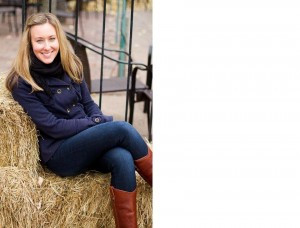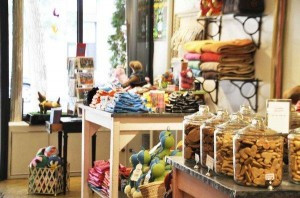There are more than 8.3 million women-owned businesses in the United States, according to the 2012 State of Women-Owned Businesses Report, commissioned by American Express OPEN.
These businesses generate nearly $1.3 trillion in revenue, and employ nearly 7.7 million people, the report showed.
To mark Women’s History Month, we decided to profile female retail business owners. Each of them has a unique story about how they started, but they all tend to have several things in common — a passion for pets, a passion for providing a service and a passion for business.
They are driven, determined and know how they want their business to run. Some of them decided to leave the corporate world to become their own boss.
We asked them about the trials and tribulations of being a business owner, advice they were given when they started their business and what they would tell other women who want to get into the industry.
Lyn Borcherding
Woofers Grooming & Goodies
What made you get into the pet retail business?
I heard about a grooming business that was for sale and could not get the idea of working with dogs off my mind.
My husband asked me if I wanted to be a groomer. I said no and created a job for myself by adding retail sales to our grooming business.
We now have a very large store specializing in dog products and our sales are steadily increasing each year.
What has been the most difficult part about being a business owner?
Dealing with employees and paying all the different taxes.
What is the best part about being a business owner?
I can have a flexible schedule, well, most of the time. There is an opportunity to make good money and create new ways to make money within the business. For example, we are expanding our business by building boarding kennels at our home, where we will also offer dog training.
What was the best piece of advice given to you before you started your business?
Be prepared to put in lots and lots of hours.
How do you achieve work/life balance?
I keep my cell phone number private and try to detach from the business when the doors are locked. Facebook, on the other hand, keeps me connected to my business in the off hours because that is when I find the time to post.
Actually, my work and life are very integrated. When we started this business we had one big dog, we now have five big dogs in our home. Our whole lives are now about dogs and the dog business and we love it that way.
What advice would you give other female business owners?
Keep a positive attitude and ask for help and/or advice when you need it.
Tell us something unique about the way you run your business.
Our dogs are at work with us every day. We have had customers bring their out of town friends and relatives in just to meet our dogs. We are, “The home of the $6.00 nail trim!”
We also offer pet portraits.
My husband built a portrait stage, and at Christmas time people are very excited to get their dog’s portrait taken and made into Christmas cards or photos for framing.
Patrycia Miller
Bubbly Paws Dog Wash and Pampered Pooch Playground
What made you get into the pet retail business?
I was tired of working in the corporate world. I have always had a love of dogs and wanted to turn this into a career. My husband and I have a 7-year-old Bernese Mountain dog who we took to doggy daycare often when she was a puppy. Roxy is like our child, and we enjoy giving her the best food, leashes and products. So owning two dog businesses comes naturally as we want to share other unique products with other pet parents.
What has been the most difficult part about being a business owner?
Trying to compete with some of the larger chains and corporate stores.
What is the best part about being a business owner?
You get to create your own hours and do something you love every day. I know that sounds really cliche, but it is true. Our doggy daycare has about 100 dogs every day and it is so much fun to get to know each one of their personalities. I also love to watch the puppies grow up into adult dogs.
What was the best piece of advice given to you before you started your business?
Make sure to take time off from the business. You can’t be there 24-7 and you need to start trusting employees to run the place when you are not there.
How do you achieve work/life balance?
It can be hard. I love to go to yoga and crossfit, which is my escape from the dog world. It can always be challenging owning a business with your husband, but we are really good about trying to leave the business at the business. I also love to travel and explore the world.
What advice would you give other female business owners?
Stick with it. The early months are always hard, and you need a strong support system of friends to catch you when times are tough, or when it was a rough day. Make sure you are able to get away from the business, don’t be one of those owners that can never leave the business (everyone needs and deserves a vacation).
Tell us something unique about the way you run your business.
Both our businesses are very active in the pet community. We offer doga (doggy yoga classes at our doggy daycare) and in the summers sponsor “Beer with your Buddy,” which turns a local bar into a dog park. We are very community minded and give back every month to local pet rescues. We don’t just use social media, we LOVE social media.
Patti Colandrea
 Bark Bark Club and ShopBarkBarkClub.com
Bark Bark Club and ShopBarkBarkClub.com
What made you get into the pet retail business?
Once I decided to leave the corporate world, I did a lot of soul searching for a direction to go. Focusing on things that I truly loved, I decided working with pets would be the most rewarding next career.
I went to grooming school knowing that I wanted to open my own shop. In order to take a holistic approach for my new clients, having a retail store offering the best products for a happy, healthy pet made sense. It was important to me to have all USA made food and treats that only used the highest quality ingredients.
What has been the most difficult part about being a business owner?
In the beginning the biggest challenge was wearing all the various “hats” – knowing everything from how to groom all breeds of dogs to balancing the books each month. As time went by and I had some revenue, I could hire people who are really good at what they do – like a good accountant.
What is the best part about being a business owner?
There are so many. When it grows and is successful – knowing that I made it happen, either by doing it myself or making good decisions and hiring the right people. I also love that I can really make a difference in my community, whether it is by donating to a local fundraiser or through starting the area’s first pet food pantry. Of course, the best part of being in the pet business is the instant gratification when I see the joy we bring to a pet and their companion.
What was the best piece of advice given to you before you started your business?
Never give up and focus on what you want – instead of what you don’t want.
How do you achieve work/life balance?
Good question. That has always been difficult for all business owners I know. I now make sure to designate one day a week that is mine only, no work at all. This has helped a lot.
What advice would you give other female business owners?
Follow your passion and your love. When I was trying to decide what my new career should be, I only thought about the things I love the most. Pets won as being my biggest passion and I have never regretted the decision.
Tell us something unique about the way you run your business.
I always treat anyone who comes through my door as an old friend coming into my home. This may be an old Midwest farmer attitude. It is how I was raised and I truly enjoy meeting new folks who have a love and passion for their family pet member.
Lindsay Condefer
 The Chic Petique and Street Tails Animal Rescue/Thrift for Tails
The Chic Petique and Street Tails Animal Rescue/Thrift for Tails
What made you get into the pet retail business?
The Chic Petique was born after my dog, Madison, became severely ill due to pneumonia. Her fight to stay alive opened up a door in my life to natural pet care. When she wouldn’t respond to antibiotics, I turned to Flower Remedies as a last resort; and she came home to me five days later. This experience drove me to research all I could on the benefits of natural pet care.
At that time, there was nowhere in Philadelphia that offered natural foods and remedies for pets. I realized that there was a void in the city that needed to be filled. The shop, although bright and fun, is about “spoiling from the inside-out.”
My goal is to give every pet owner the education and advice, that at the time when Madison was sick, I wish I had. Each product we stock has been carefully chosen and is something I feel that I can truly stand behind.
What has been the most difficult part about being a business owner?
The most difficult part of owning a business for me is the financing. I built the shop from the ground up — without a loan or credit cards to fall back onto. Retail is always difficult, as it seems like at times it’s a vicious circle. If there’s no money, there’s not enough product. If there’s not enough product, there’s not enough sales to make money.
What is the best part about being a business owner?
The best part about being a business owner is waking up every day and knowing that you are doing something you love. It’s a labor of love, and ideally, all small business owners know that from the start.
What was the best piece of advice given to you before you started your business?
My parents have always taught me to follow my heart and to never give up. With my shop and my rescue, I know I have succeeded in doing just that.
How do you achieve work/life balance?
My work IS my life, so the balance is easy. If your heart is in your business, even though you work 24/7, it doesn’t feel like work. I honestly wouldn’t know what to do if I truly had a set schedule — or days “off.”
What advice would you give other female business owners?
Keep your chin up. Let any bad that happens make you stronger, and always keep a smile on your face. Each time another shop opens near me — and since the natural pet industry has grown so much over the years- it happens often — I try not to let it get me down — I use that to make me stronger.
Jenny DuBrock
 Don’t 4 Get About Me
Don’t 4 Get About Me
What made you get into the pet retail business?
About six years ago, we rescued a Greyhound, Sandy, from the track in Kenosha, Wis. and she quickly became part of our family. When we would travel, we would always bring something back for Sandy and also our friend who watched her for us.
We realized that many people do this for their pets and felt this concept could carry us to open our own business, something we had wanted to do for a long time, but just weren’t sure what the concept would be, until that moment. We attended a pet retail trade show in the very early stages and were both amazed and impressed by the size and growth of the industry, even throughout tough economies.
People love their pets, us included.
What has been the most difficult part about being a business owner?
When you open a business, it’s a 24-7 job whether you are at the shop or not. Our business is always on our mind on ways to improve and benefit the customers and ultimately their pets. The most challenging part of opening the business was deciding what products to carry. We carefully selected the inventory.
We also had to stay on top of many things in a short amount of time. There is still a long way to go to get where we want, but each day we get a little better. You have to learn to look at things both on the small scale and as a big picture, as well as from the side of a retail shop owner and the side of a passionate pet owner
What is the best part about being a business owner?
Meeting the people that come into our shop and hearing about their pets and how much they love them. We have seen many pets and cell phone pet photos and started a Wall of Fame in our shop where we post pictures of our satisfied customers.
One of our solid foundations for our business is that if we won’t give the product to Sandy, we won’t sell it. It’s important to us to have all natural, Made in the USA treats.
Also, working for myself, knowing the sky is the limit and I can be as creative as I want to be is also a great part of owning a business.
What was the best piece of advice given to you before you started your business?
Honestly, many people were skeptics and concerned about us leaving jobs to start our own business. We believed so strongly in our concept, we opened the shop anyway. After many positive responses from customers, we believed we did the right thing.
In time, people started understanding the concept we had for our store and encouraged us to pursue our dreams.
How do you achieve work/life balance?
It’s not easy, but I’m trying. We have a deep drive and passion for our business and it really doesn’t feel like work. My husband and I love to attend the industry trade shows and make a vacation around our time there as well.
We bring Sandy to Galena with us and I enjoy taking a break from the store and walking her around the beautiful area.
What advice would you give other female business owners?
Never stop learning and networking. There are many opportunities to better yourself and stay on top of the industry. Attend trade shows, get involved with the visitor center, chamber and women’s groups within it. You never know where the next door you open may lead.
Always enjoy and be proud of your business.
You need to believe in it and be passionate about it for it to be a success.


 Bark Bark Club
Bark Bark Club The Chic Petique
The Chic Petique Don’t 4 Get About Me
Don’t 4 Get About Me hnology and the ubiquity of the web have created a world of constant connectivity, where people switch between multiple devices whether they’re sitting on the couch, riding the bus, or walking down the street. In this multi-screen world, every business is an online business, which creates an enormous opportunity for companies large and small.
hnology and the ubiquity of the web have created a world of constant connectivity, where people switch between multiple devices whether they’re sitting on the couch, riding the bus, or walking down the street. In this multi-screen world, every business is an online business, which creates an enormous opportunity for companies large and small.

 Hagen is one of the leaders in producing some of those easy-to-use products, he said. Take for example their Laguna pressurized canister filters with built-in UV filters, such as the Pressure-Flo Filter 1400 UVC, an all-in-one filtering system that keeps pond water clear and healthy.
Hagen is one of the leaders in producing some of those easy-to-use products, he said. Take for example their Laguna pressurized canister filters with built-in UV filters, such as the Pressure-Flo Filter 1400 UVC, an all-in-one filtering system that keeps pond water clear and healthy.